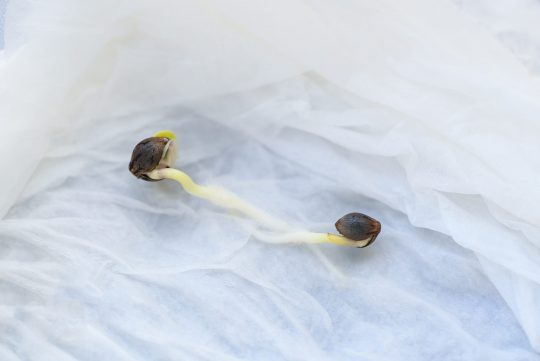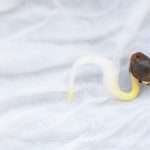
How to Germinate Cannabis Seeds : Seeds and Dispersal
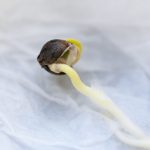
How do Cannabis Plants Produce Seeds?
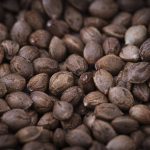
Cannabis Breeders
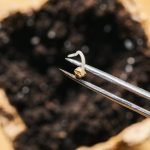
Anatomy of a Cannabis Seed
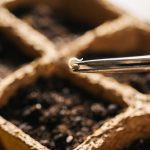
Materials Needed for Germinating Cannabis Seeds
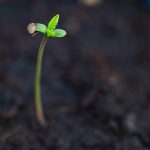
General Requirements for Cannabis Seed Germination
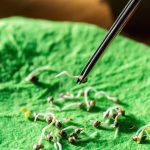
Cannabis Seed Germination Methods
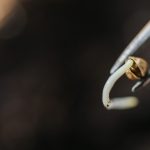
Cannabis Seeds and the Scarification Method
How to Germinate Cannabis Seeds : Seeds and Dispersal
A seed is an embryonic plant. Just as humans are embryos at the earliest stage of life, so are seeds. In the case of cannabis plants, their seeds are produced to enable new generations to spread across a landscape with ease.
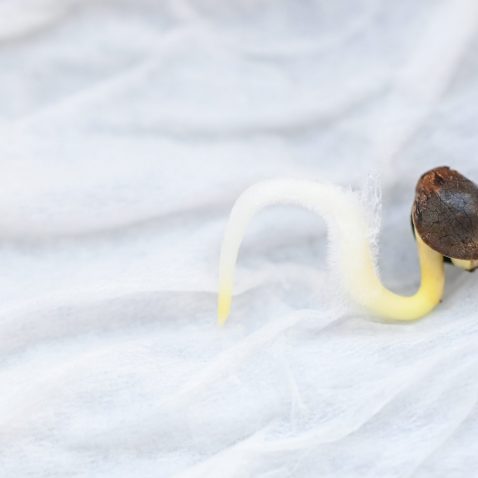
Cannabis seeds, like all other seeds, are the result of reproduction between plants. Each plant has evolved throughout millions of years to adapt to their surroundings; thus, they’ve also made their seeds adapt to certain dispersion methods.
Since seeds eventually grow into a plant, their range of mobility is fixed. They cannot move across the land as animals do; therefore, their seeds must disperse away from their immediate vicinity.
Plants have come up with ingenious ways to disperse their seeds, using wind, water, animals, and even though their own physical force to throw them out.
Some seeds are equipped with “wings,” which are adaptations that allow the seed to ride the current of the wind for an extended period of time so that it’s dispersed away from its mother.
Many are adapted for water submersion, while others are capable of being digested and remaining intact or to latch onto the fur of a passing animal.
The ways that seeds are dispersed are many, but cannabis has recently found an interesting partner to help in its dispersal. Humans are the leading cause for transporting cannabis seeds throughout the world.
Before their popularity in the last 50 years, many cannabis species were endemic to specific regions throughout the globe.
Now, with the help of human intervention, cannabis seeds are found in the suburbs, cities, and farms. Each cannabis seed is prized, and we do our best to make sure each and every seed germinates so that no seed is wasted.
This is the general understanding between us and cannabis seeds, in which the most legendary strains have been found in unnamed “bag seed.”
Each marijuana seed carries the potential of a legendary strain within its shell, and like you, we’re always concerned with making sure our cannabis seeds make it past the germination process.
How do Cannabis Plants Produce Seeds?
Cannabis is a flowering plant that allows flowering organs to facilitate their breeding system. Cannabis plants are dioecious, meaning they have male and female reproductive organs on separate plants. This is why you’ll find a cannabis seed to be either a male or female.
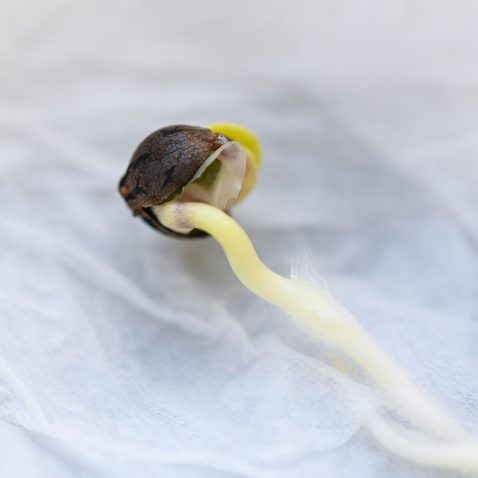
Males produce pollen sacs that are filled with pollen grains. These grains are microscopic in size and are easily carried by the wind or insects.
Male flowers become mature and release at the same time that females are flowering.
Females exhibit large flowers that are covered in sticky trichomes to increase the possibility of male pollen attaching to them.
Female flowers are also covered in pistils, which are the reproductive point that takes in pollen grains. Once in contact, the pistil sends the pollen down a pollen tube to fertilize the ovary.
Once fertilized, the ovary begins to produce the seed. In the case of cannabis plants, the seed is produced within 6-8 weeks after fertilization.
Cannabis plants are capable of producing hundreds to thousands of seeds, depending on their size.
Cannabis Breeders
As cannabis seeds have become legal for purchase in many states, many cannabis seed breeders have cropped into the scene.
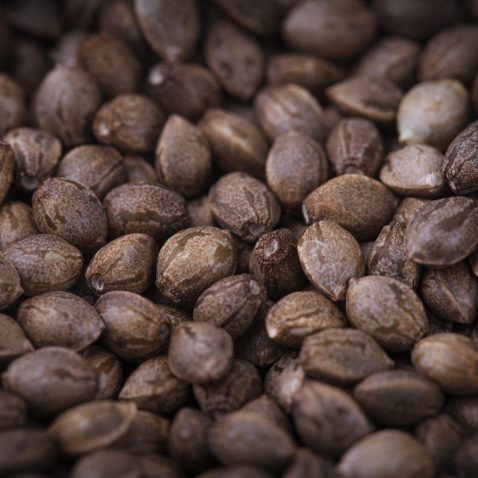
Marijuana seed breeders are responsible for countless crosses that enable us to enjoy new and exciting varieties of cannabis.
This niche has created a new market within the cannabis industry, and it’s also given rise to artisanal breeders to showcase their work to the public.
As more individuals become interested in growing their own cannabis, the marijuana seed market will continue to flourish.
Anatomy of a Cannabis Seed
Let’s take a brief look at the anatomy of a cannabis seed so that you can identify each portion when you begin germinating your own marijuana seeds.
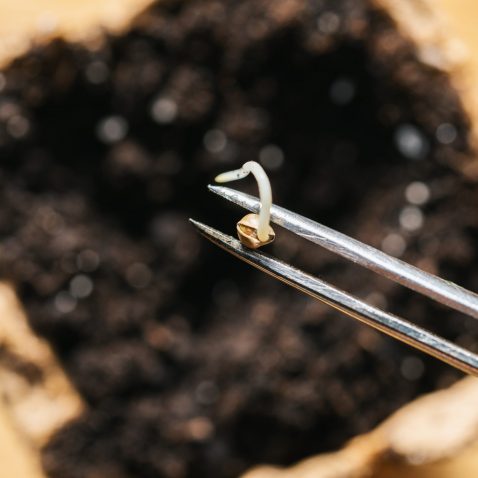
Outer Shell
The first thing that you’ll notice when you see a cannabis seed is the outer shell. This is the protective covering that encases the embryo found within.
The outer shell is capable of withstanding the elements and physical force that the seed may encounter before its suitable to begin its germination process.
The outer shell may exhibit slightly different shads of color or patterns. A common pattern found on the outer shell is dark stripes, similar to that of a tiger.
The color is a light to dark green. You can identify an immature cannabis seed if its color is an off-white.
It’s difficult to see with untrained eyes, but the outer shell exhibits the pericarp, which runs along the middle portion of the seed. During the germination process, the pericarp opens to reveal the embryo, radicle, and cotyledon.
Embryo
The cannabis embryo is what’s being protected by the outer shell. It’s also the portion of the seed that will become a marijuana plant.
The embryo contains the genetic material of the plant’s lineage, as well as the necessary nutrients to begin its life until it becomes established.
Radicle
The radicle is another name for the initial root. This primordial root elongates during the germination process, and as the plant matures, it continues to grow outwards with many adventitious roots to uptake nutrients.
Cotyledon
A cotyledon is considered an embryonic leaf, rather than a “true” leaf. It’s the portion of the plant that will show itself first after germination has occurred.
As the cotyledon unfurls itself out of the seed, it grows upwards through the medium that it’s being grown in.
The seed shell is still attached as the cotyledon moves towards the surface, and as it pushes through the material, the seed shell is removed by force.
Once the outer shell is removed from the cotyledon, you’ll see two identical leaflets. As the plant begins its first steps in life, true leaves will emerge to begin photosynthesizing to produce its own food source.
Materials Needed for Germinating Cannabis Seeds
There are many useful tools that you can use to retain a high germination rate. Take a look at each of these germination tools so that you’re prepared when it comes time to germinate your prized cannabis seed collection.
- Heat Mat
- Humidity Dome
- Seedling Tray
- Peat Containers
- Rooting Cubes
- Rockwool Cubes
- Low-Wattage Lighting
- Identification Markers
- Hormones and Additives
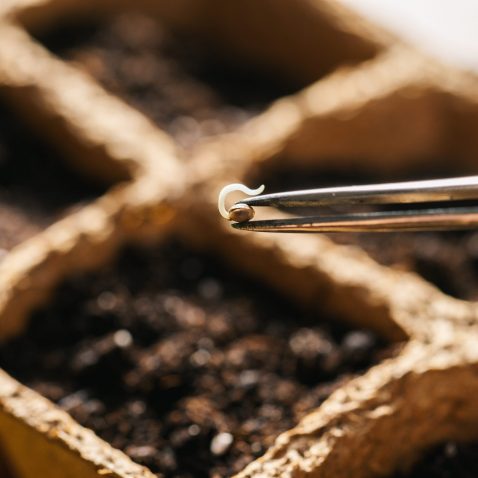
Heat Mat
If you want to know how to germinate seeds fast, then a heat mat is one of the most useful tools that you can use. Heat mats are foldable electronic mats that increase in temperature once plugged in.
These come in various sizes and are generally 2-4’ in length. These perfectly fit seed trays, and the heat that they deliver isn’t dangerous to your seeds.
It’s imperative that you find a heat mat that retains a steady temperature. Temperature swings can be dangerous for your cannabis seedlings because they’re at their most vulnerable point.
The limbo between being un-germinated and breaking out of the soil is a period that can affect the plant’s life entirely.
Some heat mats are now including temperature controllers. Although these aren’t necessary, it may be a great idea to pay extra for this convenient feature.
Since germinating cannabis seedlings is a wet experience, you should also make sure that your heat mat is waterproof.
Humidity Dome
A humidity dome is an attachment for a seedling tray. The humidity dome is a must have because it traps warm and humid air within its environment.
Humidity domes have vents located on various points, which allow for air exchange if the humidity is too high. These domes work in conjunction with heat mats, and when paired, offer you a perfect system for germinating cannabis seeds.
Since trays come in different sizes, it’s essential that you find the same sized humidity dome to ensure that the heat and humidity are strapped.
Seedling Tray
Seedling trays can either be used with or without the inserts. These trays are a single component within the entire seed germination system.
Seedling trays come in many different sizes to accommodate a large number of cannabis seedlings. They work directly with humidity domes to ensure that each cannabis seed has the ideal temperature and humidity level.
Seedling trays are placed on top of heat mats to bump up the internal temperature of the germination medium.
Cannabis seeds require a certain temperature to trigger their germination process, so it’s essential that your germination system reaches this ideal point.
Peat Containers
Peat containers are ideal for germinating your cannabis seeds in because once the marijuana plant becomes established, you can directly transplant the container into a larger pot or hydroponic system.
The peat material is biodegradable, which makes it suitable for those that are environmentally conscious and wish to reduce their use of plastics.
These containers can easily be placed inside of a seedling tray and humidity dome setup.
Rooting Cubes
Rooting cubes are one of the best tools to use for germinating cannabis seeds. They’re cheap, biodegradable, and are simple to use.
These are ideal for beginners because all you need to do is place the seed inside the pre-cut hole and add water.
Rooting cubes are generally composed of peat moss, decomposed wood, and other natural materials that are efficient at retaining their moisture content.
These cubes are small enough to fit in the palm of your hand, and they fit perfectly into the tray inserts that come with your seedling tray.
Once the cotyledon breaks through the surface, you can easily pull out the rooting cube and place it into a larger container. This rapid transfer is ideal so that you reduce any amount of stress on the young root system.
Rockwool Cubes
Rockwool cubes may seem strange at first, but these hydroponic mediums work exceptionally well when germinating seeds. Rockwool is made from spinning heated rock into thin fibers, similar to that of cotton candy.
These fibers are compressed into small cubes, similar to that of rooting cubes. Rockwool is known to retain high amounts of moisture, which is ideal when germinating cannabis seeds.
Many novice marijuana cultivators make the mistake of letting their marijuana seeds dry out, which leads to their seeds’ demise.
Rockwool is the preferred rooting method when growing cannabis in a hydroponic system. Rockwool is an inert and hydroponic medium, which makes it ideal for transferring to any hydroponic-based growing system.
Low-Wattage Lighting
Although cannabis seeds don’t require light during their initial germination process, they do need it the moment the cotyledon appears.
It’s at this point the true leaves start to form, so it’s crucial that you have some form of low-wattage lighting to prevent your cannabis seedling from stretching and becoming unstable.
Appropriate lighting comes in the form of CFLs, T5s, and LEDs. All of these emit low levels of heat and a low enough wattage that won’t stress out your cannabis seedlings.
The intense light from HPS and MH may prove to be too much for your delicate marijuana seedlings, so it’s essential to switch your lighting when dealing with cannabis seeds and seedlings.
Identification Markers
Identification markers are helpful because many growers don’t germinate only one strain at a time. If you don’t mark each rooting cube or container with your seed, you’ll lose track of which strain it is.
It’s essential to keep track of all of your seeds, even if they’re of the same strain. Many strains exhibit a wide range of phenotypes, and tracking them with the use of identification markers makes this process straightforward.
Hormones and Additives
It’s important to note that there are hormones and alternative additives that can increase germination rates and speed up germination times. Gibberellins are natural hormones found in plants that stimulate seed germination.
Agricultural companies have found ways to extract these hormones to stimulate various seeds, including cannabis.
Other additives that are known to decrease germination times are kelp extract, vitamin B, and probiotics. All of these products can help you when germinating your cannabis seeds, but they’re not guaranteed to always work.
General Requirements for Cannabis Seed Germination
When it comes to germinating cannabis seeds, you can’t just turn on a switch to make them pop out. Nature has its own way of dealing with things, and cannabis seedlings are dependant on various conditions before they begin to sprout. Let’s take a look at what general requirements are needed when germinating cannabis seeds.
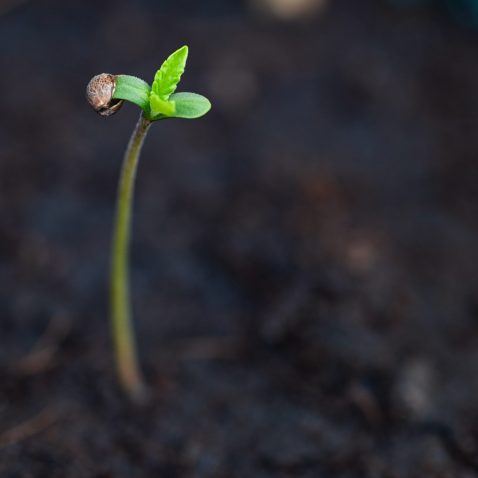
Moisture
Moisture is a key ingredient when it comes to germinating marijuana seeds. A single drop of water isn’t enough to activate what’s known as imbibition. This some-what complicated word is a feature that all seeds are capable of.
After a specified exposure time to water, cannabis seeds absorb water through their outer shell, thus signaling to the embryo to begin germinating.
This moisture is necessary to facilitate the elongation of the radicle and cotyledon, and without it, will wither and die. This is why it’s vital to maintain a steady amount of moisture during the germinations process.
As with all things, too much moisture is a bad thing, so if you feel that your marijuana seeds are overly saturated, you may need to let them dry (to an extent).
Heat
Heat is another requirement that can’t be underestimated. When you want to learn how to germinate cannabis seeds, this is the advice that you’ll generally hear first.
Cannabis seeds enjoy a warm environment because this is an internal signal that tells the embryo that it’s springtime.
Cannabis is an annual plant; therefore, it grows during spring, flowers during the summer, and dies in the fall. The seeds overwinter to avoid growing during extreme conditions that they aren’t suited for.
Luckily for us, we have heat mats which gently increase the medium’s temperature that the seeds are germinating in.
Air
Air is another factor when you’re learning how to germinate cannabis seeds. The air is filled with oxygen, which is a crucial component when sprouting seeds.
During the germination process, cannabis seeds actively respire. As long as the soil isn’t packed too tight, the seeds shouldn’t have any issue obtaining oxygen from small air pockets within the medium.
It’s for this active respiration that you should never pack down soil or any other medium on your cannabis seeds. Instead of germinating, they’ll absorb water but begin to rot due to a lack of oxygen.
Cannabis Seed Placement
This is a common question that green-thumbs and novices ask. Which way should you orient your cannabis seed when placing it into the soil or in a rapid rooter cube? The answer is that it doesn’t matter.
Cannabis seeds have evolved over millions of years, which is more than enough time to figure things out. Regardless of how you place your marijuana seed, it will feel the pull of gravity and immediately know which direction to push it radicle.
Since the seed inherently understands up and down, it also pushes its cotyledon upwards, seeking to break through the medium and burst forth into the world.
Cannabis Seed Germination Methods
You may wonder how long it takes for cannabis seeds to germinate. This question depends on a variety of factors previously mentioned (air, moisture, and temperature). Some seeds are capable of sprouting in 1-2 days, whereas other seeds may begin their life in 2-5 days. Let’s take a look at the many ways that you can use to germinate your cannabis seeds safely.
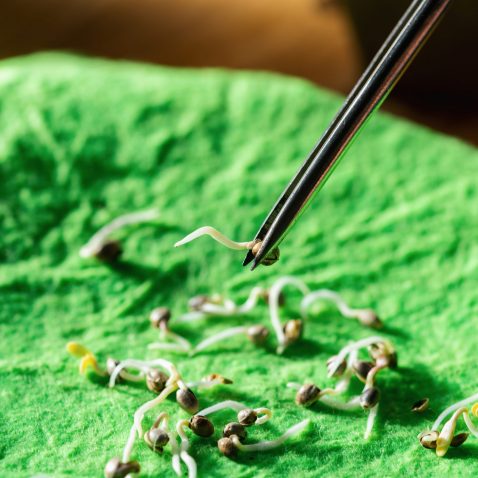
Rockwool: How to Germinate Cannabis Seeds
Rockwool is a common substrate that’s used to grow cannabis hydroponically. Its inert substance doesn’t leech any residual chemicals or nutrients that can adversely affect cannabis seeds.
Since marijuana seeds have 1-2 weeks worth of nutrients stored in their embryo to begin their life, rockwool is a perfect substrate to start your marijuana seeds in.
Step 1
Place your rockwool cubes inside a seedling tray. Saturate each cube with distilled water that’s been pH tested to 5.5.
Step 2
There are already pre-cut holes inside the rockwool. Place one seed per rockwool cube. As you already know, orientation does not matter, but it’s essential that you don’t press the seed too hard into the rockwool.
Step 3
Place the humidity dome over the seedling tray. If your climate calls for it, make sure to use a heat mat to increase the overall temperature to germinate your seeds quickly.
Step 4
Depending on various factors, you may look into your rockwool cubes, and you’ll see the seeds swelling due to the imbibition process. As long as your rockwool cubes are moist to the touch, you won’t need to water them.
Rockwool stays wet for long periods, which make it ideal when you’re unable to water every day.
Step 5
At this point, the cannabis seeds have sprouted and are just beginning to peak out of the rockwool. Some seeds may still have their outer shell attached to the cotyledon.
Don’t force the outer casing off of the cotyledon, as you may destroy the seedling in the process.
Step 6
Your seedlings have sprouted, and it’s high time to give them adequate light.
Paper Towel: How to Germinate Cannabis Seeds
The paper towel method is an age-old classic way of germinating cannabis seeds. This is the most cost-effective technique available, but it does come with its own drawbacks. Let’s take a look at how to germinate cannabis seeds in a paper towel.
Step 1
Make sure to buy the double-ply paper towels that effectively retain their moisture content. The thinner paper towels are not ideal because they may dry out faster than you’d anticipate, thus leaving your valuable marijuana seeds in danger.
Step 2
Take 2 paper towels and place them together. Make these paper towels wet. Take a large plate and lay the paper towels down. Place your seeds in the middle of the paper towel.
Step 3
Fold the paper towels over your cannabis seeds. Make sure there’s contact between the paper towels and the marijuana seeds.
Step 4
Place the plate in a warm area. You’ll need to monitor the paper towel because these will dry out much faster than any other method listed.
Step 5
Don’t wait for your paper towel to become dry. Instead, be proactive and use a spray bottle to mist the sheets 1-2 times a day (depending on the climate).
Step 6
Check your seeds daily. You’ll see which seeds have germinated because the outer shell will have split and the radicle will have pushed out.
Step 7
This is the tricky part. It’s at this stage that many growers fail at the paper towel method. Gently pick up the sprouted seeds and place them into your preferred medium to allow them to continue growing.
This method needs to be done with the utmost care because the radicle is incredibly fragile. If you accidentally harm the seed at this stage, you may effectively delay the plants’ development.
Step 8
Once you’ve transplanted the sprouted seeds, follow the steps of tending to cannabis seedlings.
Soil: How to Germinate Cannabis Seeds
Learning how to germinate cannabis seeds in soil is a foundational step to growing marijuana. This technique is a standard that every grower should understand.
Whether germinating cannabis seeds indoor or outdoor, it’s imperative that you know how to implement this method.
Step 1
Choose a loamy soil that’s mixed with a water retaining substrate.
You want a fast draining potting soil mixed with a substrate that holds onto water because you want to ensure that the cannabis seedling has access to oxygen and moisture, but the medium doesn’t retain too much moisture that can lead to rot.
The ideal mix is a low nutrient soil that’s mixed with perlite and vermiculite.
Step 2
Use a seedling tray or peat pots. Place the soil into either of these and use a pencil to make a ¼ – ½” deep hole.
Step 3
Place a single cannabis seed into a hole. Gently place soil over the hole and cover it thoroughly.
Step 4
Use a spray bottle to mist the top level of soil until it’s saturated. Cover the seedling tray or pots with the humidity dome. If your climate calls for it, use a heat mat.
Step 5
Check the moisture content of the soil every day. If the top layer of the soil feels dry, immediately mist it until entirely wet.
Step 6
You’ll know your cannabis seeds are germinating once you see the cotyledons breaking through the soil surface. Once this occurs, it’s time to get the seedlings under light and into a new container to begin their life.
Water: How to Germinate Cannabis Seeds
Germinating cannabis seeds in water may seem counter-intuitive – especially after noting that marijuana seeds need access to oxygen.
This technique requires you to be diligent and ready to pull your marijuana seeds out of the water the moment they germinate. Follow these steps to learn how to germinate cannabis seeds in water.
Step 1
Fill a glass cup with lukewarm water. Drop your cannabis seeds inside.
Step 2
Patience and timing is everything with this method. Keep a close eye for when the cannabis seeds begin to swell.
Step 3
The moment you see the cannabis seeds split, pull them out and place them into your preferred medium. If you accidentally forget about the seeds or take them out too late, they will die.
This method should only be used when you have ample time to monitor the germination process.
How to Germinate Old Cannabis Seeds
Germinating old cannabis seeds can prove to be incredibly difficult. Many cannabis strains that are more than a few years old lose their vigor, and you’ll need to employ a few tricks to jump-start them.
Step 1
Many products on the market enhance cannabis seeds’ viability. Gibberellins are natural hormones found in plants that signal growth. This hormone has been synthesized into liquid products to be mixed with water.
Step 2
Soak your old cannabis seeds in this solution and wait for the germination process to occur. Some seeds may be beyond their viability date and are incapable of germinating.
Cannabis Seeds and the Scarification Method
Do you want to learn how to germinate cannabis seeds fast? The scarification method has been used in agriculture for countless years.
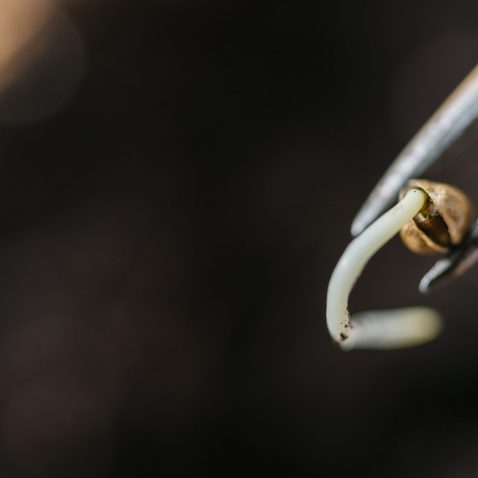
Scarification means that you must break down the surface of the seed without destroying it.
This can be done by using sand paper. Gently rub each side of a cannabis seed a few times on the sandpaper. Once done, use any of the above-mentioned germination techniques.
Summary
Now that you’ve followed this guide on how to germinate cannabis seeds, your journey through the world of cannabis has officially begun. Germinating cannabis seeds is a critical skill to know when growing marijuana because this is method brings a new cannabis plant into the world.
As your marijuana plants grow from seedlings to large bushes bearing an abundant harvest, you’ll be in awe that it all started from a small seed.
Share the Love
If you found this post useful, please let others know about it by sharing it.
